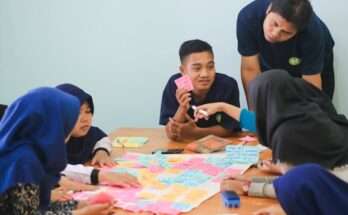design sprint process in 5 steps, A design sprint is an immersive process that helps you solve problems using design, prototyping, and testing. This guide will help you understand how to start your design sprint, from kickoff to post-sprint follow-up. Design sprints are an effective way to develop new products, services, or features by streamlining collaboration in your organization. Here’s how you can get started with your first design sprint!
How to start your design sprint process in 5 steps
- Define the problem
- Brainstorm possible solutions
- Prototype your problem
- Testing product in the design sprint process
- Make decisions
Step 1: Define the problem
The first step is to define the problem or issue you are trying to solve. The problem definition is critical for deciding what solution will work best. The more specific you can be, the easier it will be for your design sprint participants to understand what they need to design.
The next few steps include writing a set of personas (customer profiles), creating an empathy map, and assigning every sprint participant two or three tasks based on their skill set so that no one person is overwhelmed with work. It is also important to take care of all the logistics before starting the actual process: find out where the meeting space will be and make sure there’s coffee, food, water, and good Wi-Fi available throughout the day.
Step 2: Brainstorm possible solutions
When brainstorming, be open to all solutions and experiment with different ideas. Often the best solution is the one you did not think of first. Brainstorm at work, at home, or by taking a walk. Start by asking questions such as What are we trying to accomplish? What do we have now? and How might this product change if I do X? Do not worry about what’s possible or impossible – just explore! Share your ideas with the team.
 Anyone can contribute, regardless of their level of expertise or knowledge. You will gain useful information from others and you’ll never know where great ideas may come from. Remember that you are brainstorming solutions for a design thinking sprint; so stay focused on achieving objectives and developing new tactics to help you get there faster!
Anyone can contribute, regardless of their level of expertise or knowledge. You will gain useful information from others and you’ll never know where great ideas may come from. Remember that you are brainstorming solutions for a design thinking sprint; so stay focused on achieving objectives and developing new tactics to help you get there faster!
Now, take a look at what you’ve written down and put each solution into one category: For each category make sure to share with everyone why you placed that particular idea in that category. Once you are done with brainstorming, pick a timebox (30 minutes is usually fine). Get input from your team on which ideas should be moved forward. This way every idea gets a fair shot without anyone feeling like their idea was ignored. 1 minute – When making decisions about which ideas are most likely to succeed during a design sprint, it can help to apply some criteria and quickly eliminate some ideas early on.
Step 3: Prototype your problem
Prototypes can be great for sparking new ideas, showing how a design might work to solve a problem, and just generally accelerating the process of getting feedback. They’re one of the easiest ways to experiment and iterate on an idea without incurring too much design or development cost. There are many different types of prototypes you can make depending on what stage of development you’re at. We’ve listed some below along with their primary use case: *Paper prototypes are typically used at the beginning stages to help get a better sense of what screens might look like when they’re put together with words and pictures.
Another important thing to consider is who you’re prototyping for. The more personas you have defined, and more importantly understand, when starting out a project—the better off you’ll be. Ask yourself why each persona needs something from your product and what they need it for. What’s their main goal? Knowing those answers will make it easier to choose how and where you prototype, how much effort or fidelity of a prototype makes sense, and what kind of feedback you want or don’t want.
The fastest way to do it is by finding a real project that you can put into a prototyping tool, such as Sketch or Figma. You can also search for free design templates on Dribbble and Behance, which are great for rapid idea generation. If you don’t have any specific ideas, try sketching out all of the possible scenarios or use cases you want your prototype to show off. Designate a color code—or more than one if necessary—to each scenario so you can keep them straight when wireframing with post-it notes later on. Then, pick one that best represents what kind of prototype you need and run with it!
Step 4: Testing product in the design sprint process
Testing your product during design sprints is a process that not only helps you identify potential user pain points but also gives you the opportunity to gather some crucial user feedback. For example, if you want to find out how people will use your product, what they don’t like about it, and where they may need more explanation or guidance on how to use it best. It’s common for companies to conduct multiple rounds of testing in the design UX design sprint with prototypes that are incrementally improved before the final one. Test early and often and ask questions so you know what people do (and don’t) like about your product!
While working through design sprints, you’ll want to think about ways you can test not only what people like or don’t like about your product, but also how they use it. Will users prefer using a website over an app? Will they need extra help understanding what it does? A test in every round is important for helping you hone and define a specific problem solution. Are there certain tasks that require extra focus for testing purposes? If so, do them last because you’ll want more time at the end of design sprints for iteration!
Think about how you can gather qualitative and quantitative feedback when testing. For example, you could hold a live or Google Hangout survey and record people talking through their thoughts as they use it or watch them complete a task. If you want to hear specific insights from certain users, ask them questions that will help you get there! At Google Ventures, they’ll often offer free food or coffee at their design sprints so that people have time to hang out with each other during breaks. This helps them build up a rapport with participants—and even get more honest feedback about their product!
Step 5: Make decisions
After you’ve completed the design sprint process, you’ll have a better idea of what to prioritize and how to solve customer problems. Make sure to weigh all of the user research that you’ve gathered and the customer needs that you’ve identified. The next step is deciding what problem is most important to solve. Focus on that one issue and only include enough other improvements to make things better, but not so many that it would distract from solving the main issue at hand. These additional improvements should be made by tackling smaller problems over time as future sprints. Keep making decisions until there are no more!
Once you’ve reached a decision, it’s time to make it! If you can’t decide between different solutions, come up with an action plan for implementing them and ask your team which one they’d like to see first. You could also bring out all of your potential improvements and gather data on how important each improvement is or prioritize each of them based on team member preference. Either way, reaching a consensus is just as important as coming up with a plan for implementing ideas!




